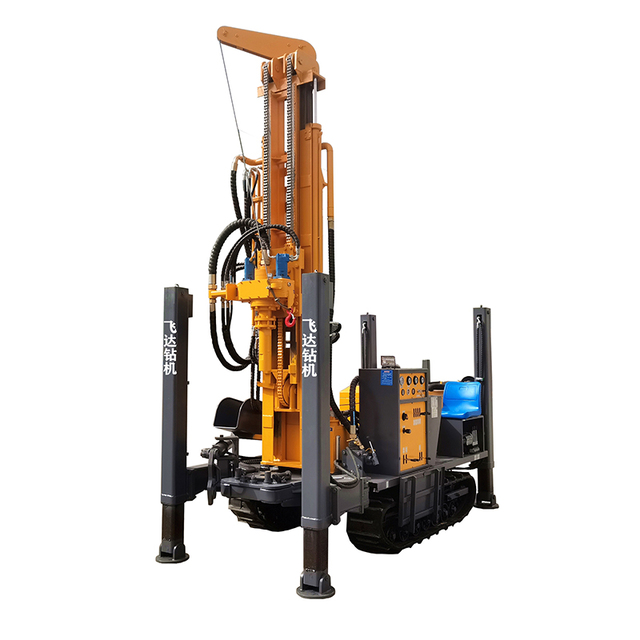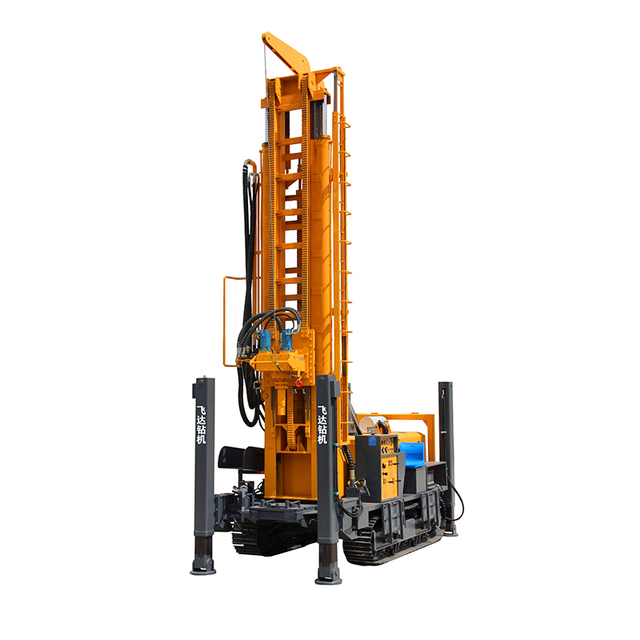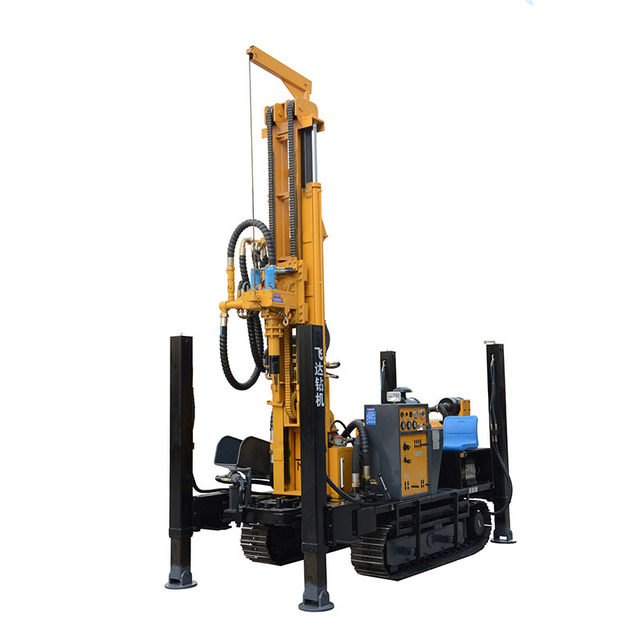types of water well drilling
People often rely on the intricate process of water well drilling to access beneficial groundwater for both industrial and residential application. Put simply, this involves the engineering of an underground pathway in which to tread. To make this task simpler to understand, we are going to review the individual types of water well drilling that are in circulation. It is important to note that the skills and materials required to carrying out this process are specific and require specialized training.
Potent Power of Cable Tool Drilling
Cable tool drilling, a method that has withstood the test of time, remains one of the most commonly utilized techniques for water well drilling. It involves a cable tool rig hinged on a steel cable, which is connected to a weight. The repetitive motion of lifting and lowering the weight causes the steel bit to pound into the ground. The steel bit is removed and replaced with a drill pipe that further dives into the ground to reach the groundwater. Notably, cable tool drilling is an affordable route for shallower wells.
The preferred technique for establishing medium to deep water wells is rotary drilling, which involves the use of a rotary tool – such as a mud motor or rotary drill bit – connected to a drill pipe. This pipe has the ability to rotate and, in doing so, form a hole in the ground. However, this process is more costly than cable tool drilling.
Drill Into the Air, Foam, and Mud with Rotary Drilling.
Air, foam, and mud come together to craft a special slurry used for rotary drilling. This slurry offers lubrication which facilitates a more streamlined drilling process – perfect for those extra deep wells. While this approach can be pricier than regular rotary drilling, the mixture of air, foam, and mud makes it a worthwhile investment.
Harnessing the Power of Direct-Push Drilling
Recent years have seen the evolution of a highly efficient and cost-effective drilling technique: direct push drilling. This method is capable of penetrating the earth rapidly and easily through the employment of a powered system that propels a drill stem and bit downward. It is ideally suited to shallow wells and allows for rapid access to groundwater.
For the construction of deep wells, a specialized form of water well drilling – turbine drilling – is employed. Functioning with a high-velocity action, the turbine drill bit is explicitly attached to the drill pipe, all driven by an efficient motor. Costlier compared to other varieties of well-drilling, it is worth noting that turbine drilling affords a robust solution for creating holes in the ground.
Venturing deep into the earth, geothermal drilling is a way to harness renewable energy for residential and industrial needs. This costly yet specialized process requires a well to be bored down into the earth in order to access the geothermal energy ‘reserve’, which can then be used to regulate temperatures in buildings.
Exploring the various types of water well drilling can help you make an informed decision to suit your requirements. Whether it is directional, air rotary, or percussion drilling, every method has its own set of advantages and drawbacks. Take the time to assess each one’s feasibility before deciding on the one best suited for your project.
With the utilization of special machinery designed for the purpose, water well drilling finds its use in boring a hole deep into the soil to access aquifers, groundwater tables, or additional sources that can be leveraged to provide a sustained water supply. These resources can then be used for such purposes as agricultural irrigation, residential water services, and geothermal energy requirements.
Four key methods of water well drilling exist, each of which is based on the type of water source, the landscape, and how deep the hole goes. These techniques involve considerable intricacies as they are tailored to address the specific conditions encountered. The primary categories include:
Percussive Cable Tool Drilling: A Detailed Exploration
For many years, cable tool drilling has been the primary method employed for sinking water wells. Powered by a cable or chain, the rotating drill bit is gradually lowered into the ground, where it works to excavate the terrain. Upon retrieval, the excavated material is removed from the site. This traditional technique is typically used in soil or rock formations that are relatively soft in composition. Despite its lengthier timeline, it does offer the significant benefit of not needing a small area in which to operate.
In the pursuit of quenching our thirsts, Rotary drilling is the tried-and-tested technique typically employed to create water wells. Its process goes like this: a motor-powered rotatable bit is lowered into the ground and spun about, allowing it to bore a hole in even the densest of rocks. Generally speaking, this method is able to investigate much deeper than some of its alternatives like Cable tool drilling.
Rotary Drilling Through the Air
In comparison to cable tool or traditional rotary drilling, utilizing compressed air in rotary drilling is a much more efficient solution for digging deep wells. Air rotary drilling not only achieves a successful outcome quicker, but the pressurized air is less invasive, reducing the risk of impacting the environment around it.
In order to reach isolated water sources that are situated in tight spaces, directional drilling is implemented. This method of drilling enables tunneling to occur with a curved trajectory that curves around obstructions, delivering the bit to precise locations. As such, this technique is often employed in urban landscapes where there is minimal elbow room.
Whether through traditional or advanced approaches, water well drilling needs to be carried out with utmost care for the environment and the individuals involved. To guarantee optimal outcomes, specialists must be employed to provide requisite expertise.
Unlocking hidden water sources beneath the earth’s surface is achieved through a process known as water well drilling. This approach can vary depending on the type and location of aquifer, as well as the depth needed to reach the area. Knowing the various methods of drilling wells is vital to efficiently and effectively provide groundwater accessibility.
-
 FY680 Water Well Drilling RigView More >
FY680 Water Well Drilling RigView More > -
 FY380 water well drilling rigView More >
FY380 water well drilling rigView More > -
 FYX200 Water Well Drilling RigView More >
FYX200 Water Well Drilling RigView More > -
 FY800 Water Well Drilling RigView More >
FY800 Water Well Drilling RigView More > -
 FY280 Water Well Drilling RigView More >
FY280 Water Well Drilling RigView More > -
 FY580 Water Well Drilling RigView More >
FY580 Water Well Drilling RigView More > -
 FY260 Water Well Drilling RigView More >
FY260 Water Well Drilling RigView More > -
 Diesel 12HP180View More >
Diesel 12HP180View More > -
 FY180 Water Well Drilling RigView More >
FY180 Water Well Drilling RigView More >
Warning: Use of undefined constant rand - assumed 'rand' (this will throw an Error in a future version of PHP) in /www/wwwroot/www.sunritawdr.com/wp-content/themes/msk5/single.php on line 65
-
limestone water well drilling & services
-
water well drilling cost california
-
water well drilling yelm wa
-
water well drilling sudbury
-
drilling water well in oklahoma
-
water well drilling contractors in louisiana
-
water well driller classifieds
-
water well drilling training australia
Warning: Use of undefined constant rand - assumed 'rand' (this will throw an Error in a future version of PHP) in /www/wwwroot/www.sunritawdr.com/wp-content/themes/msk5/single.php on line 123


